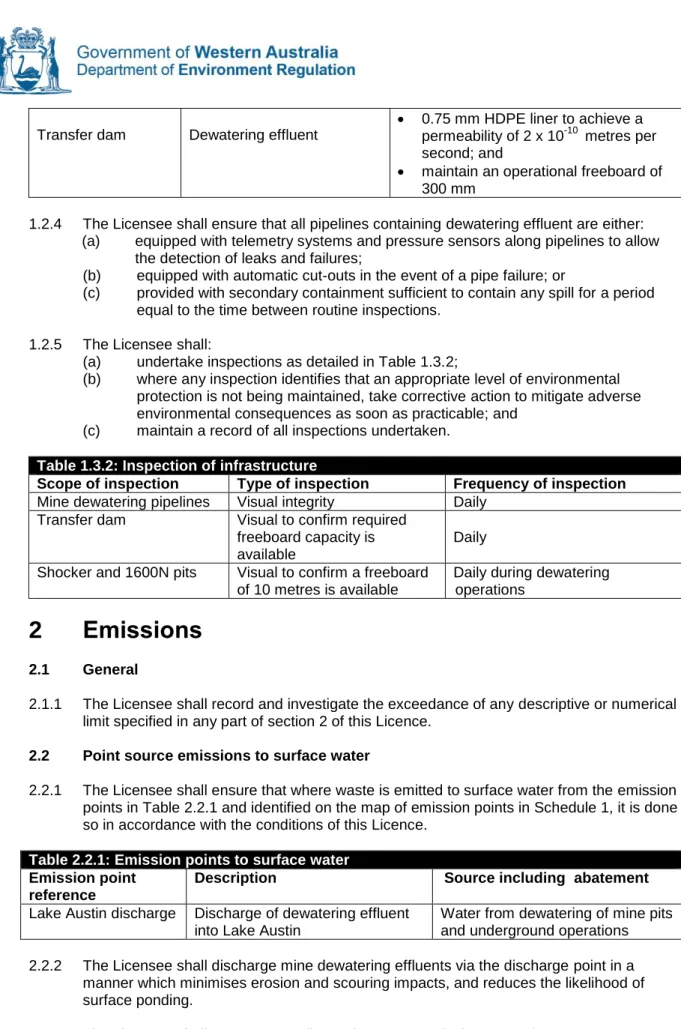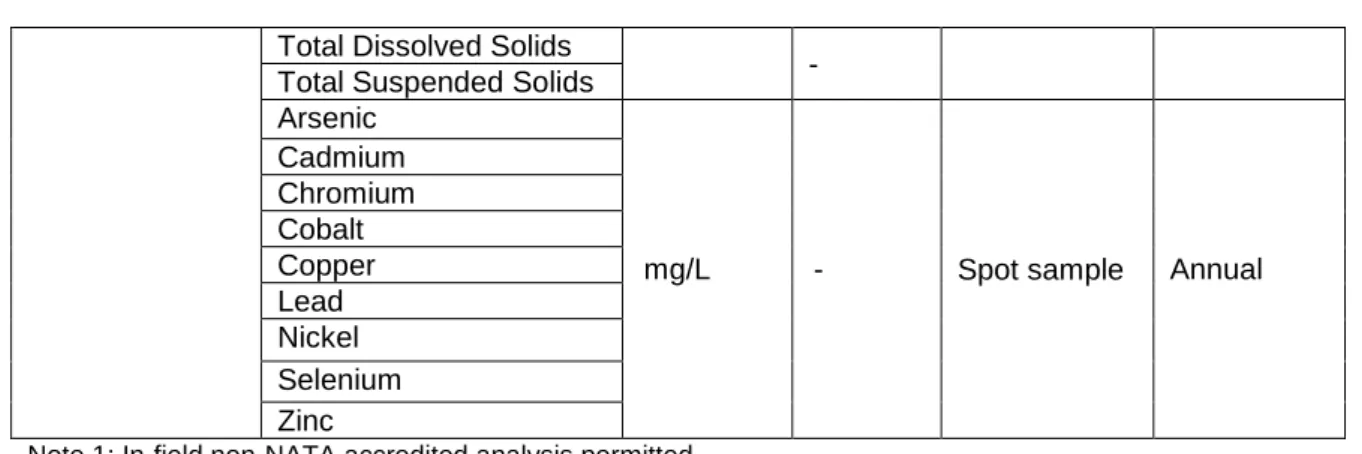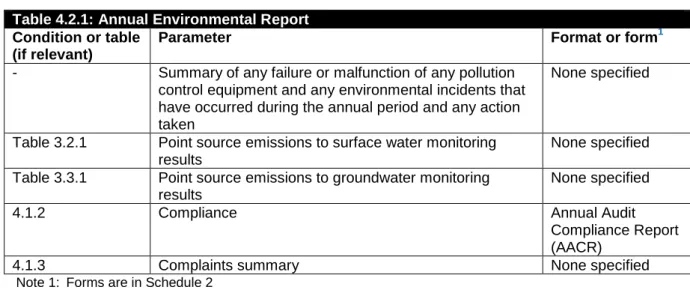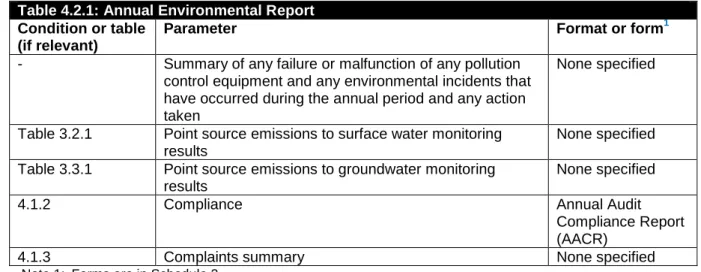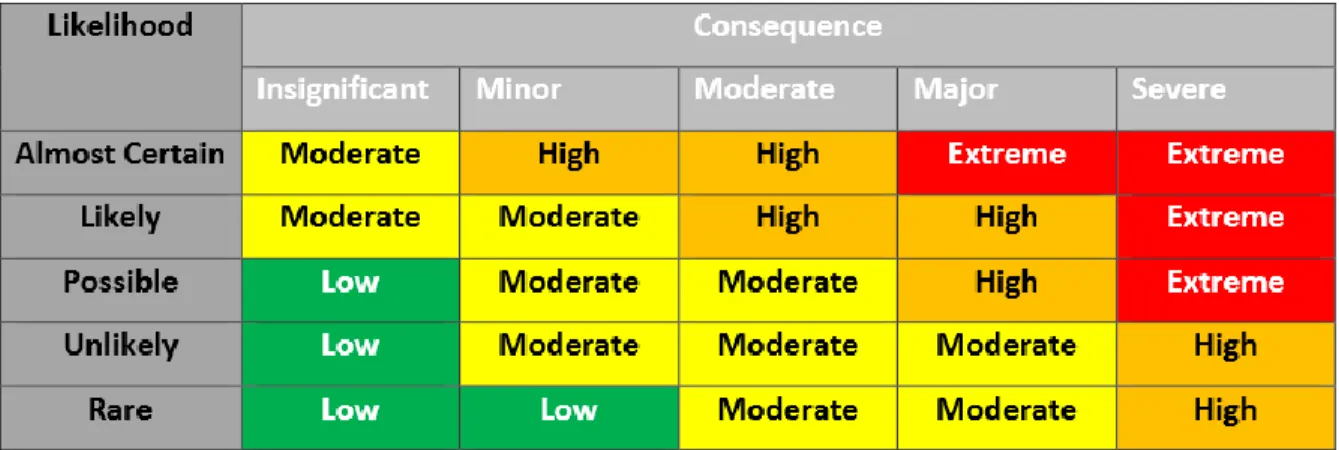The Department of Environmental Regulation (DER) is a government department for the state of Western Australia in the portfolio of the Minister for the Environment. DER has responsibilities under Part V of the Environmental Protection Act 1986 (the Act) for the licensing of prescribed premises. If your Premises have been assessed in terms of Part IV of the Act, the Minister for the Environment may have imposed conditions.
The CMGP is rated as Prescribed Terrain Category 6, under Schedule 1 of the Environmental Protection Regulations 1987. Dewatering water in excess of site requirements is discharged to Lake Austin approximately 15 miles (24 kilometers) south of the project area. AS/NZS 5667.1' means the Australian Standard AS/NZS 5667.1 Water Quality - Sampling - Guidance on the design of sampling programs, sampling techniques and sample storage and handling;.
Licensee' means the person or organization named as Licensee on page 1 of the License;. mg/L' means milligrams per liter;. NATA-accredited' means, in relation to the analysis of a sample, that the laboratory is NATA-accredited for the specified analysis at the time of analysis. Premises means the area defined in the premises map in Schedule 1 and listed as the premises address on page 1 of the licence. quarterly' means the 4 inclusive periods from 1 October to 31 December and in the following year, 1 January to 31 March, 1 April to 30 June and 1 July to 30 September.
Part A: As soon as possible, but no later than 5:00 pm on the next usual business day.

Maps
The location of the containment infrastructure defined in table 1.2.3 and the emission point and measurement point defined in tables 2.3.1 and 3.3.1 is shown below.
Reporting & notification forms
ANNUAL AUDIT COMPLIANCE REPORT PROFORMA SECTION A
SECTION B
SECTION C
Units of measurement used in information provided under Part A and B requirements shall be appropriate to the circumstances of the emission. Date and time of monitoring Measures taken, or intended to be taken, to stop the emission. Measures taken, or intended to be taken, to correct, limit or prevent any pollution of the environment caused or likely to be caused by the emission.
Decision Document
Proponent: Big Bell Gold Operations Pty Ltd Licence: L8934/2015/1
Contents
1 Purpose of this Document
2 Administrative summary
Does the proposal involve a discharge of waste in a specified area (as defined in section 57 of the Environmental Protection Act 1986). The Department of Water was consulted Yes No Is the facility within an Environmental Protection Policy (EPP) area Yes No If so, include details here, eg The site is subject to the SO2 requirements of the Kwinana EPP.
3 Executive summary of proposal and assessment
During the aquatic assessment, the lake was flooded and provided the opportunity to obtain water quality data. The salinity of the surface water ranged from 14,200 mg/L total dissolved solids (TDS) (hyposaline) to 250,000 mg/L (hypersaline) TDS. Concentrations of most metals and trace elements were below detection, with the exception of copper, and exceeded the ANZECC value for seawater (0.008 mg/L) at six of the seven sites.
The first dewatering of 3,000 megaliters (ML) to 250 meters below the ground surface will be carried out using a pair of electric submersible pumps suspended in the old transport shaft. Each pump is capable of a peak flow rate of 8.0 ML/day with an average of 6.5 ML/day over the project. Water is pumped through a high-density polyethylene (HDPE) pipeline with an outer diameter of 315 millimeters (mm) to the Shocker and 1600 wells.
The Shocker and 1600N wells are used for water storage with the water level maintained at 10 meters below the ground surface. The water pumped into the Shocker and 1600N wells is then pumped to a 7.5 mm HDPE lined transfer dam with a permeability of 2 x 10-10 meters per second. The purpose of the transfer dam is to settle suspended solids prior to final discharge to Lake Austin.
4 Decision table
Discharge of contaminated rainwater from the premises is assessed as a low risk, which is why no specified conditions regarding the handling of rainwater are imposed on the permit. The general provisions of the Environmental Protection Act 1986 in relation to causing pollution and environmental damage apply as well as subsidiary legislation, including environmental protection. Under point source emissions to surface water conditions specified in condition 3.2.1, the licensee is required to sample for total recoverable hydrocarbons in water discharged to Lake Austin, and a limit of 15 mg/L has been applied.
No specified conditions relating to air emissions or the monitoring of such emissions have been implemented in the Licence. L2.2.1 through L2.2.3 DER's evaluation and decision-making regarding the discharge of dewatered water to Austin Lake is detailed in Appendix B. The dewatering water must be stored in the Shocker and 1600N wells before being directed to transfer dam.
The requirement to monitor for total recoverable hydrocarbons is included as there is the potential for water discharges to be contaminated from the use of hydrocarbons in the underground mining operations. No specified conditions regarding emissions to land or monitoring of such emissions have been applied to the permit. Check: The nearest sensitive receptor is located approx. 5 km north of the location.
No specified conditions relating to the management of fugitive dust emissions have been implemented in the Licence. The general provisions of the Environmental Protection Act 1986 will apply in relation to causing pollution and damage to the environment. L3.1.1 to 3.1.4 General monitoring conditions are included in the License to ensure that monitoring is carried out in accordance with relevant standards.
Proper location and design of the discharge point will minimize environmental impact. Under the permit, monitoring of discharge to Lake Austin is required and the results are reported to DER for review in the annual environmental report. The implementation of environmental monitoring will be further considered if mine dewatering activities at the project are extended beyond 2018.
Information Administrative conditions are included in the permit, including keeping records, reporting and notification obligations. In accordance with the Permit Duration Guidelines, the Permit has been issued for a period of 10 years.
5 Advertisement and consultation table
6 Risk Assessment
Appendix A
The Licensee undertakes visual inspections of the pipelines once per 12-hour shift, which includes assessing the health of riparian vegetation in the vicinity of the pipelines. Emission: Overtopping of storage and transfer dam or infiltration of stored water, discharge of hypersaline water into the environment. The transfer dam, used to settle suspended solids, is equipped with level sensors to prevent overflow.
Daily visual inspections of the water storage infrastructure are undertaken to monitor freeboard and identity maintenance requirements.
Appendix B
